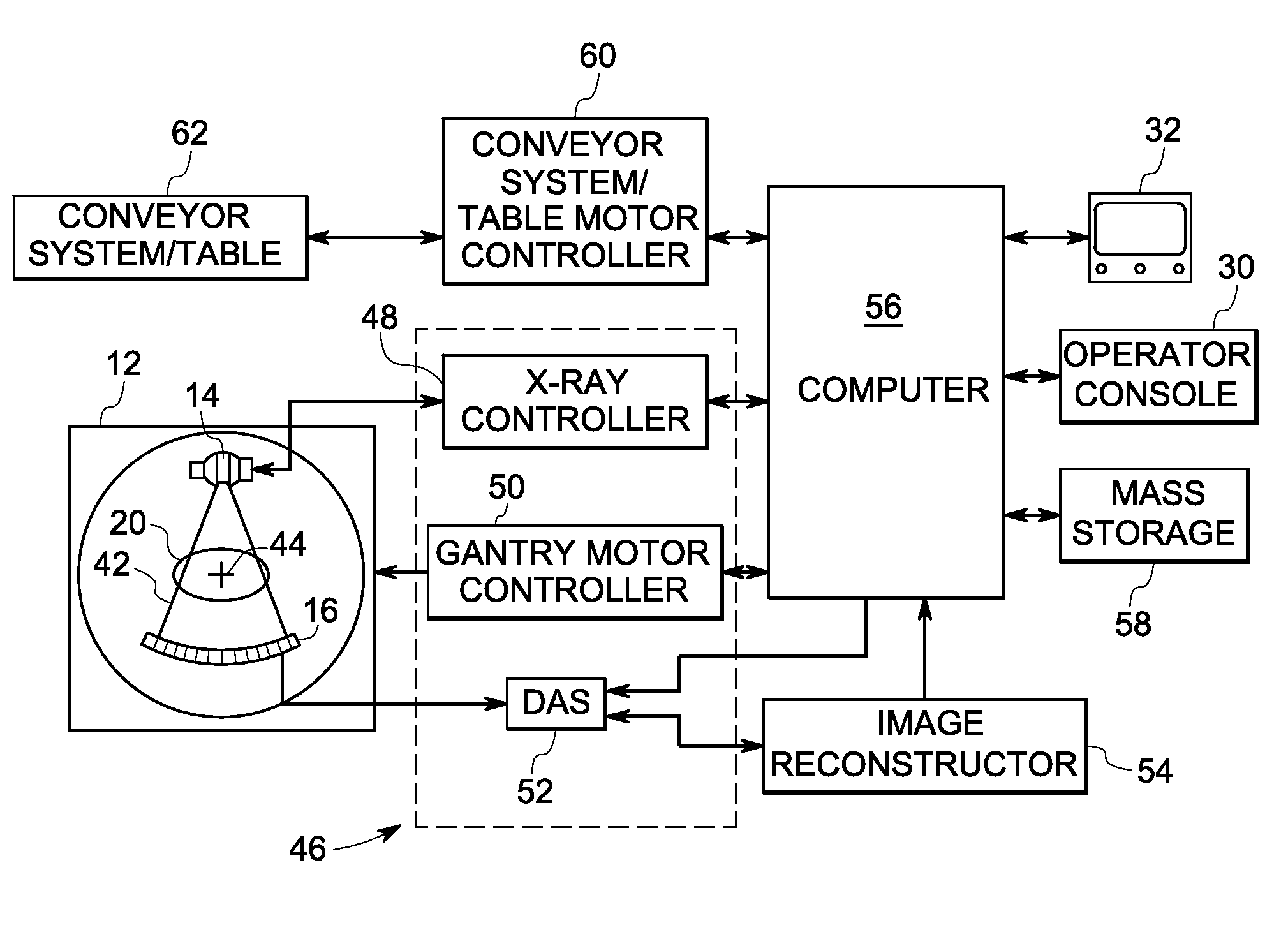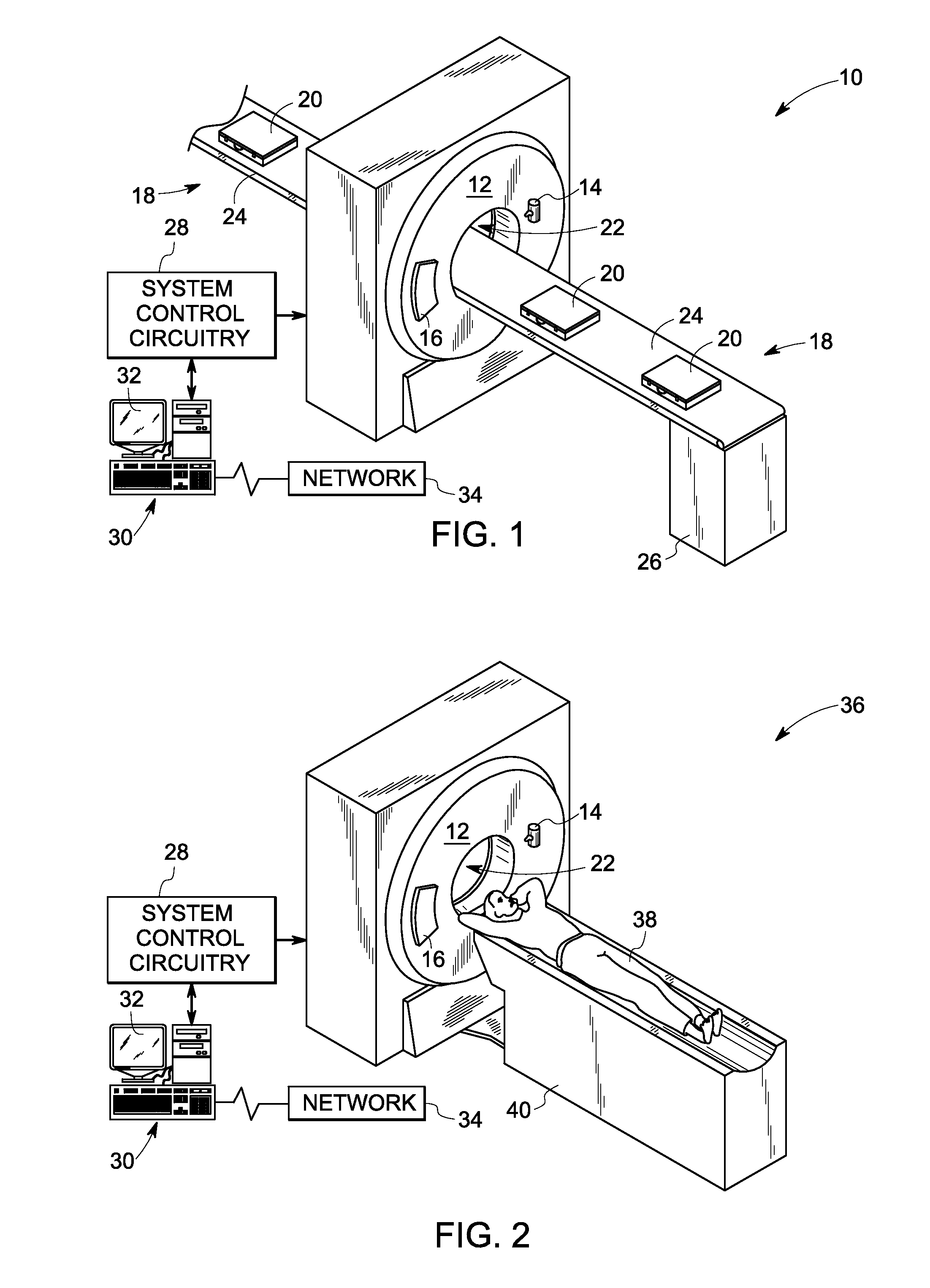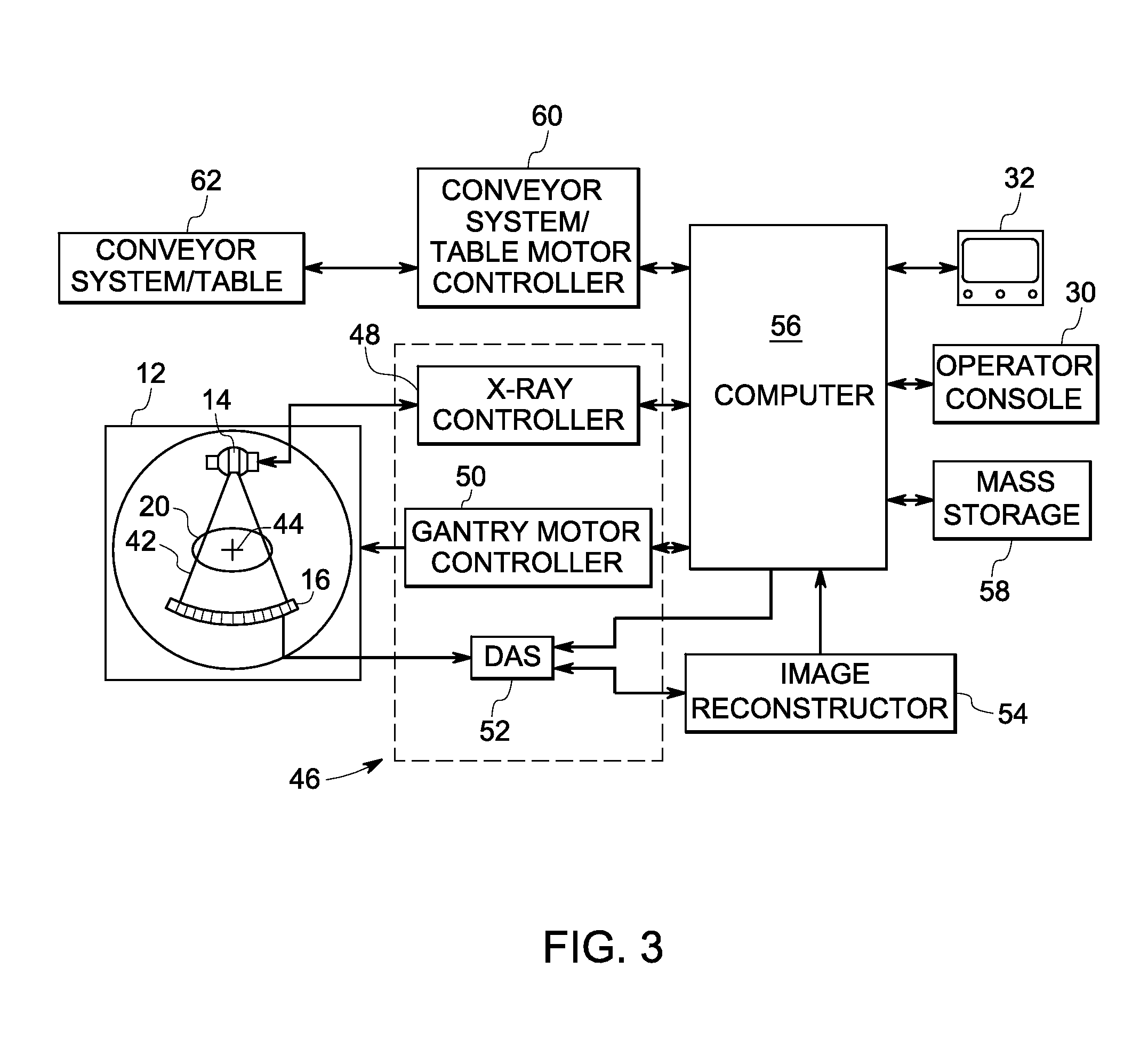Material composition detection from effective atomic number computation
a technology of atomic number and composition, applied in the field of imaged objects, can solve the problems of insufficient density information of materials, insufficient linear attenuation coefficients,
- Summary
- Abstract
- Description
- Claims
- Application Information
AI Technical Summary
Benefits of technology
Problems solved by technology
Method used
Image
Examples
Embodiment Construction
[0014]The present technique is generally related to detection and characterization of materials present in an object. For example, such material detection may be employed to identify the presence of prohibited items (such as explosives, weapons, ammunition, radiological materials, chemical agents) in baggage, luggage, packages, or shipping containers. In certain embodiments, the detection and characterization of materials could be made through the computation of the atomic number (Z) of the material. In one embodiment, the atomic number may be an effective atomic number (Zeff). As used herein, the term “effective atomic number” refers to the number of protons in the atoms nucleus, which distinguishes it from the atoms of other elements. It provides a measure of the electrostatic interaction between the negatively charged electrons and positively charged protons in the atom. As will be appreciated, the atomic number may be used to estimate the material composition of an object.
[0015]...
PUM
 Login to View More
Login to View More Abstract
Description
Claims
Application Information
 Login to View More
Login to View More - R&D
- Intellectual Property
- Life Sciences
- Materials
- Tech Scout
- Unparalleled Data Quality
- Higher Quality Content
- 60% Fewer Hallucinations
Browse by: Latest US Patents, China's latest patents, Technical Efficacy Thesaurus, Application Domain, Technology Topic, Popular Technical Reports.
© 2025 PatSnap. All rights reserved.Legal|Privacy policy|Modern Slavery Act Transparency Statement|Sitemap|About US| Contact US: help@patsnap.com



